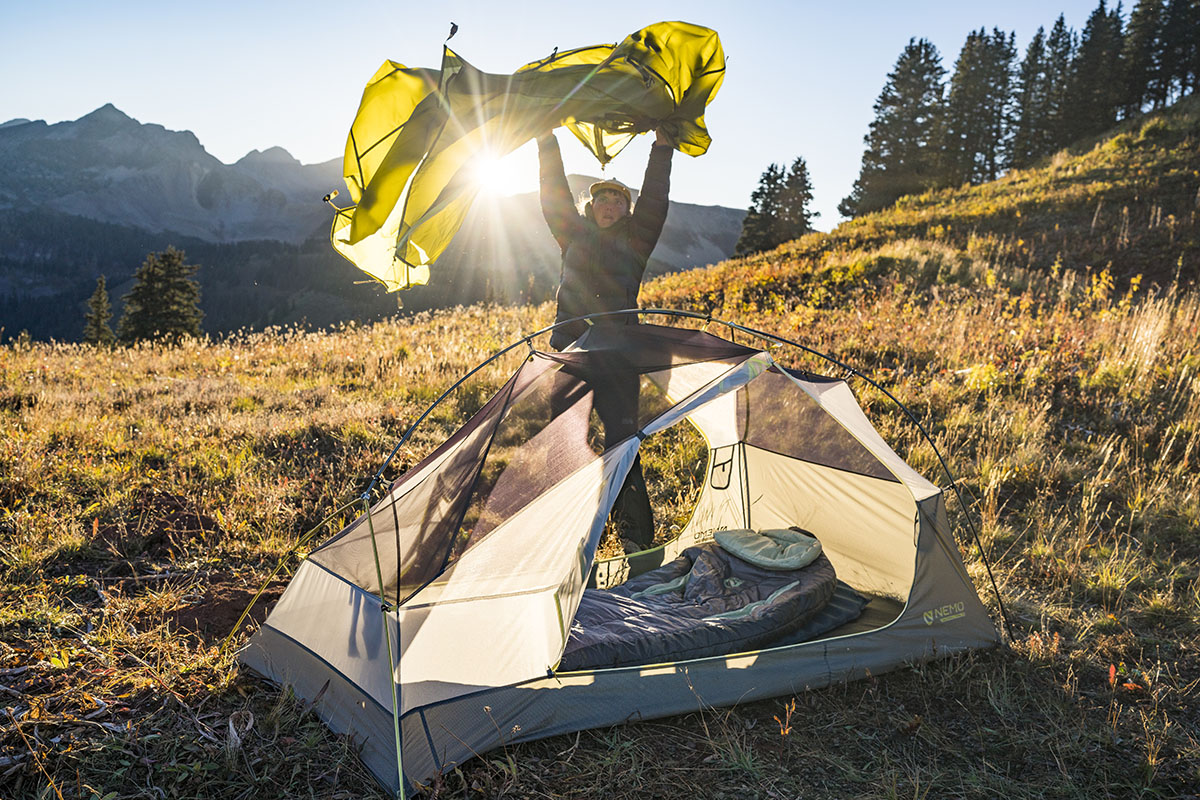

Going backpacking but don’t want to lug around a heavy tent? It can be a struggle to balance the downsides of gear weight with the bonuses of a comfortable and reliable shelter on the trail.
Videos by Outdoors
An ultralight backpacking tent is the perfect solution, offering a lightweight yet sturdy option that won’t weigh you down during outdoor adventures.
In this article, we’ve curated a list of the 10 best ultralight backpacking tents of 2024 to cater to backpackers of all experience levels, from beginners to seasoned hikers or mountaineers.
Whether you’re embarking on a weekend trip or a thru-hike, these tents offer the perfect combination of portability, durability, and comfort to enhance your outdoor experience.
We’ve even included a comprehensive buyer’s guide outlining the most important factors to consider when selecting the perfect tent for your next trip.
Our top pick for 2024 is the MSR Freelite 2. This tent not only packs down into a compact size and weighs next to nothing, but it also provides a comfortable amount of space and protection against harsh weather.
As we enter spring, it’s important to make sure your gear is top-of-the-line for your next big hike. A heavy tent can add stress and discomfort. It may be time to update to an ultralight backpacking tent.
But that’s not all: we’ve got picks for three people, a minimalist setup, the best shelter, the best for beginners, and more. Read on to see our picks for the best ultralight tents for 2024.
This post contains affiliate links. Outdoors.com may earn a commission when you make a purchase through these links. Thank you for your support.
The 6 Best Ultralight Tents
- Best Overall: MSR Freelite 2
- Best for 3 People: Big Agnes Copper Spur HV UL3 Tent
- Best Minimalist: Hyperlite Mountain Gear Flat Tarp – 8×6
- Best Shelter: Hyperlite Mountain Gear UltaMid 2 Shelter
- Best for Beginners: NEMO Hornet OSMO Ultralight Tent
- Best Budget: 3F UL Gear Lanshan 2 Pro
Best Overall: MSR Freelite
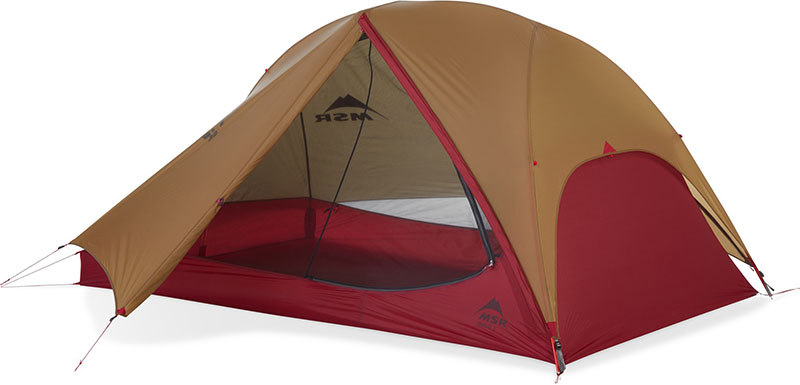
Specs:
- Minimum Trail Weight: 2 pounds
- Sleeping Capacity: 2 persons
The MSR Freelite is your all-seasons ultralight backpacking tent is a versatile tent that you can use on just about any trail.
Coming in at two pounds and easy to set up and use, this ultralight backpacking tent is great for lightening your pack without sacrificing comfort, and tent space in a two-person ultralight tent.
Coming in at a middle ground in price, this double wall tent is extremely handy and can be used in rugged terrain and variable weather. It features a waterproof DuraShield-coated rainfly and taped seams to keep water from seeping in.
While this tent is as light as possible, it’s roomy on the inside enough to hold your sleeping bag and more. It requires tent stakes to hold it up. The tent stakes are durable and resistant to use over time and the rainfly has a gutter to keep water out.
There is great ventilation provided by the mesh inner tent and it holds up well against weather and compresses easily into its stuff sack. As a one-person tent, this lightweight tent is more than enough, and it’s perfect for holding two sleeping bags.
Best for 3 People: Big Agnes Copper Spur HV UL3 Tent
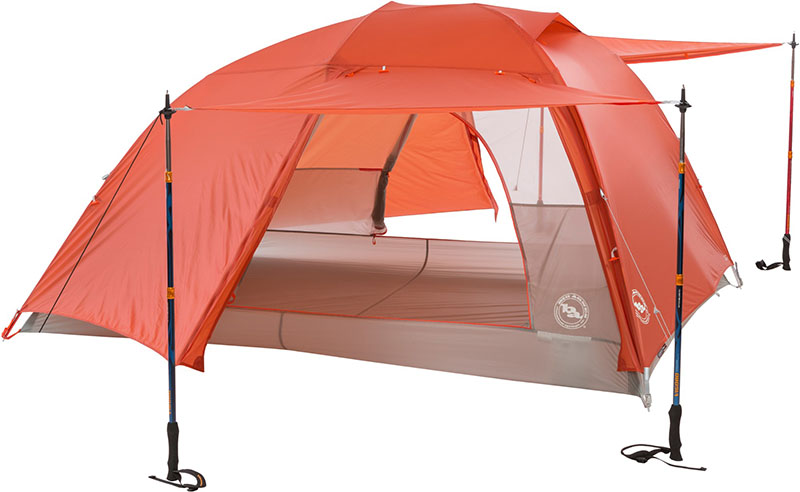
Specs:
- Minimum Trail Weight: 3 lbs. 8 oz.
- Sleeping Capacity: 3 persons
The Big Agnes Copper Spur HV UL3 offers similar features to the two-person version, but the tent body is a bit larger to accommodate an extra friend.
It has large side doors and plenty of headroom so three people can sleep comfortably, and two with extra room for gear. The width of the tent allows for three sleeping pads wall to wall.
It’s lightweight for a three-person tent and you can split the weight between hikers if needed. It has a peak height of 43 inches, so it’s taller than many other tents. It’s a bit longer than the average tent, so it’s a good pick for tall campers.
There’s an oversized ceiling pocket, and media pockets for headphone cords, and the “mezzanine” has massive off-the-floor storage.
The rainfly comes with a vent to allow airflow and the fly doors open into awnings with the use of trekking poles, which means rain protection and sun protection. It is waterproof with a ceiling vent and other well-placed vents around the tent to reduce condensation.
The tent is constructed with TopLok buckles which are convenient for tying the tent body down and is made from ripstop nylon with features with as extra tear strength and puncture resistance, so your tent lasts for a long time.
Best Minimalist: Hyperlite Mountain Gear Flat Tarp – 8×6
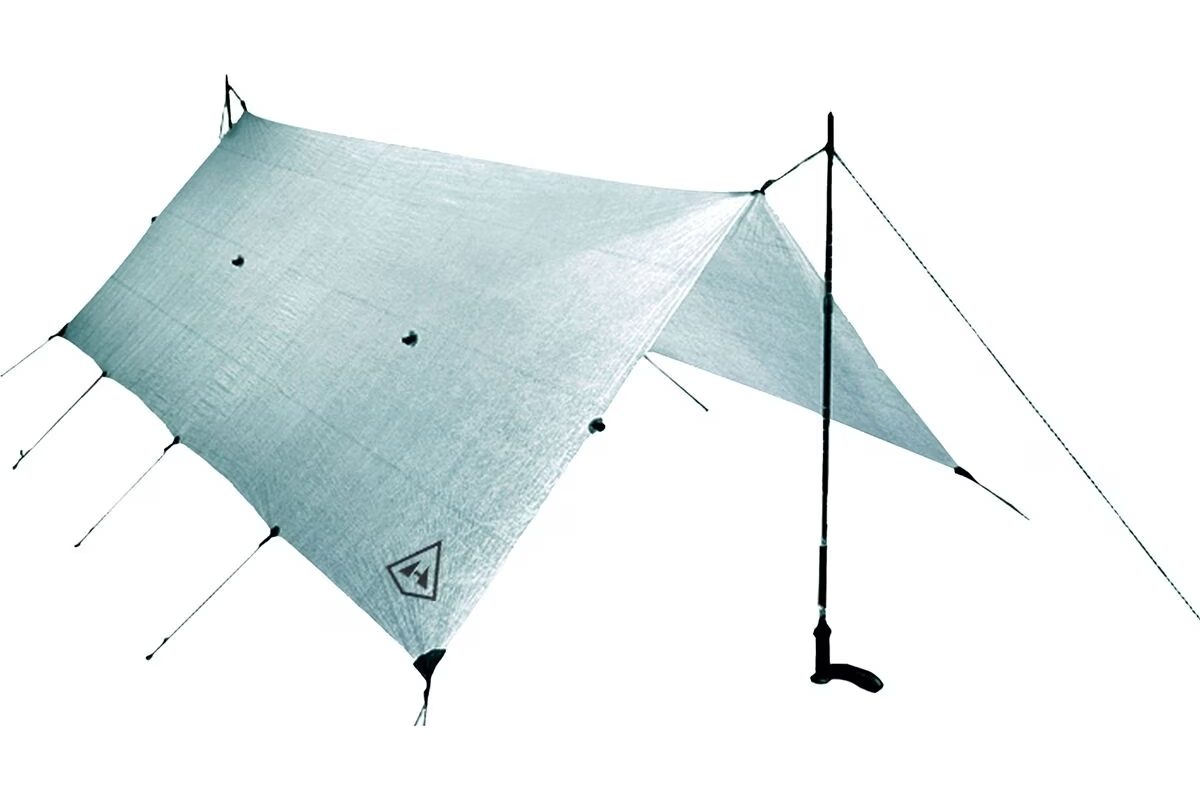
Specs:
- Minimum Trail Weight: 8.9 oz
- Size: 8’6″ x 8’6″ or 8′ x 10′
- Sleeping Capacity: 2 persons
If you don’t want the extra weight of even a tent, then a Hyperlite Mountain Gear flat tarp could be a great option for you. The flat design means it can be set up in multiple ways, depending on the terrain you wish to camp on.
The Hyperlite Mountain Gear flat tarp is made from Dyneema composite fabric (DCF), which is more durable than other tarps and will hold up against most sharp bushes.
The main general disadvantages of using a tarp are usually due to weather protection, bug protection, and privacy. But if you’re remote camping with good weather and minimal bugs, this may be the lightest, best way to go for a high-end light shelter.
Adjustable trekking tent poles provide support for the flat tarp and adding a groundsheet, inner tent, or bivy sack, can help with protection in inclement weather.
Best Shelter: Hyperlite Mountain Gear UltaMid 2 Shelter
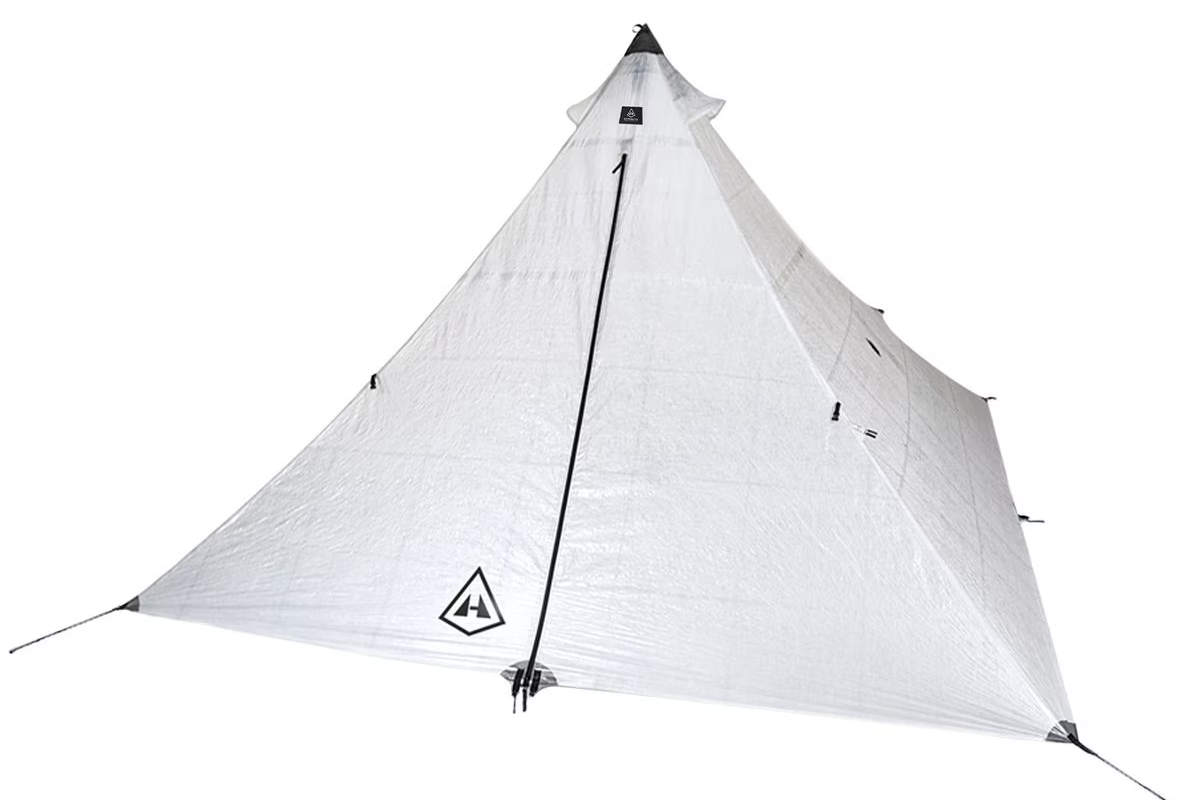
Specs:
- Minimum Trail Weight: 18 oz
- Sleeping Capacity: 2 persons
Hyperlite as a brand is outstanding in terms of design and ultralight shelters. The Hyperlite Mountain Gear UltaMid 2 Shelter is a step up from a tarp but still weighs barely anything, as trekking pole shelters will be the lightest.
For fast adventures, an ultralight, durable shelter is the best choice. The Hyperlite Mountain Gear shelter works for one to two persons who really don’t want to carry any extra gear. It can endure harsh winter camping and is durable against wear.
This minimalist weatherproof shelter is great for alpine climbs and thru-hiking where you want, and need, to save weight.
This shelter does not have a bottom but has an exterior body with tent walls and waterproof zippers with a seam seal and sealing to prevent moisture from coming in.
The Dyneema tent fabric will protect you from bugs and prevent your gear from getting wet. The base is designed to push water away from you so will prevent the water from piling up. Multiple vents allow airflow even while zipped in.
This ultralight shelter is a trekking pole shelter without tent poles and works best when used with hiking trekking poles or ski poles.
Best for Beginners: NEMO Hornet OSMO Ultralight Tent
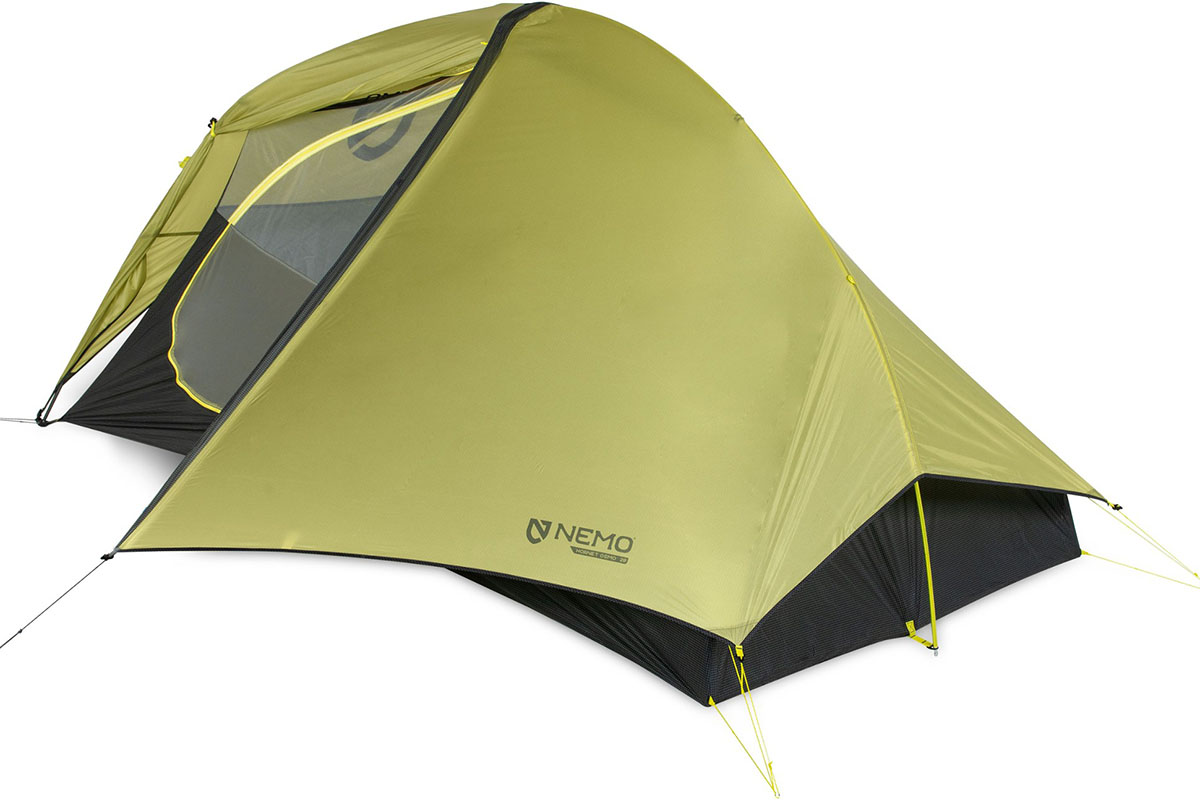
Specs:
- Minimum Trail Weight: 1-2 lbs
- Sleeping Capacity: choose from 1-3 persons
The NEMO Hornet OSMO Ultralight Tent is extremely simple to pitch and is a fully freestanding tent, making it even easier to use. This freestanding tent has a wishbone tent pole so you don’t have to carry extra parts or use your own trekking poles or ski poles to support the tent.
This tent is a great ultralight backpacking tent for beginners who don’t want the weight and bulk of a regular tent but are not interested in the complexity of some of the other ultralight backpacking tents, but don’t be fooled, it’s a high-quality tent overall.
This tent is best pitched on a relatively flat surface and doesn’t have the flexibility of a flat tarp, but is simple to use and one of our favorite ultralight tents.
You have the option to use it without the rainfly. It has OSMO poly-nylon ripstop fabric with great water repellency made from recycled yarns that have less stretch when wet.
You can choose from a one-person ultralight tent or two or three-person tent, and all options provide plenty of gear storage. Features like the connections of the inner tent to the tent fly, allow for more space. It’s really easy to tie back the tent door if you need extra ventilation.
While this tent may be easy to use, it may not be as weather-protective as other tents that are designed for harsh conditions.
Best Budget: 3F UL Gear Lanshan 2 Pro
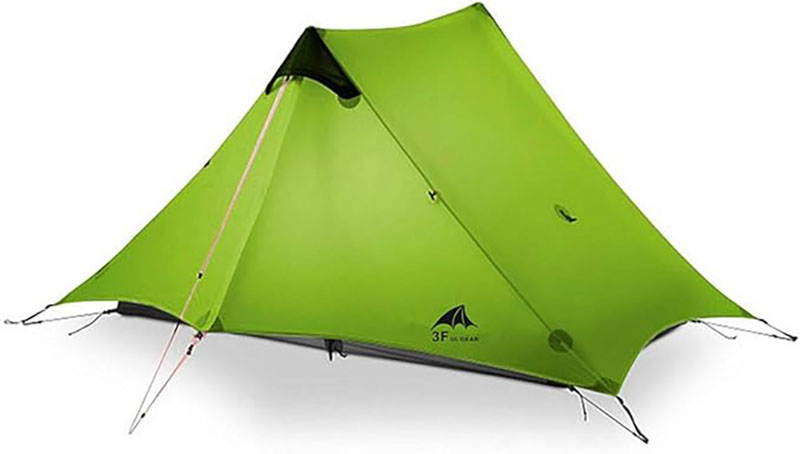
Specs:
- Minimum Trail Weight: 2 lbs 7 oz
- Sleeping Capacity: 2 People
For the price, this tent is an incredible buy. It does compromise on some features like seam sealing. Using two trekking poles, loop your pole tips to secure the poles and fully extend the width of the bathtub floor to set up the tent body.
With two-person tents, there is usually room for gear, and the Lanshan 2 Pro struggles to compare with some of the other tents, but for a single person, it would be plenty.
The price is undoubtedly the selling point. If you can compromise on a few features, you can end up with a great tent that is one of the lightest semi-freestanding tents. This tent isn’t bad for the price and is a great option if you want something light but are not fussy about the details.
If you’re seeking a lightweight tent that offers great value and decent craftsmanship for under 2.5 lbs and less than $200, you’d be hard-pressed to find a better option. Just keep in mind that this tent requires two trekking poles for setup.
Buyer’s Guide: How to Choose the Best Ultralight Tent
When venturing into the realm of buying a new tent, evaluating the tent weight, type of shelter, durability, and weather protection will allow you to choose the type of ultralight gear that works for you.
Read more about the debate between lightweight vs ultralight backpacking.
Tent and Shelter Weight
Perhaps the most critical aspect to evaluate when comparing the best tents is to check the weight. An ultralight tent should be, well, ultralight.
A hiker or adventurer interested in such a tent may pay close attention to weight, where the difference between a few ounces, and certainly pounds, can make all the difference. Lightweight materials such as Dyneema Composite Fabric or nylon strike a balance between low weight and durability.
Packability
Especially if thru-hiking, make sure your tent packs down well and can be compressed to a size that works for you and your setup. A freestanding tent may be slightly larger but will offer more comfort. The packability of a tarp, on the other hand, is hard to beat.
Check out the tents’ stuff sacks and see if all the components fit well and are still lightweight. Pay attention to the packed dimensions and ensure the tent can fit comfortably alongside your other gear without consuming excessive space.
Durability
Some light tents are not as durable. Their lightweight construction can sometimes compromise ruggedness. Look for tents featuring reinforced seams, robust pole systems, unless they use a single trekking pole and durable fabrics that can withstand outdoor use.
Weather Protection
Tents are made for differing weather conditions, so when you go to get a tent, ensure you check the specifications and reviews concerning what type of weather the tent is made for. If you know you’ll be camping in wet weather, make sure you opt for a larger tent or shelter.
Choose a tent with a durable rainfly, sealed seams, and waterproof fabrics to keep you dry and comfortable during storms. Additionally, check the tent’s ventilation strategy to minimize condensation buildup and maintain airflow inside the tent.
Frequently Asked Questions
What is the lightest tent to carry?
The lightest tent to carry is really a tarp, like the Hyperlite Mountain Gear Flat Tarp. If you know you can withstand the exposure of a tarp, it is the lightest shelter that you can use instead of a tent. Light tents are around one to two pounds in general, or less.
What is a good weight for an ultralight tent?
A good weight for an ultralight tent typically falls within the range of one to three pounds, although some models may weigh even less.
They prioritize weight savings, however, it’s essential to strike a balance between weight and durability, ensuring that the ultralight tent you choose can stand up to weather and obstacles on the trail.
What is an ultralight tent?
An ultralight tent is a lightweight, compact shelter designed for backpacking, thru-hiking, and other outdoor adventures where minimizing pack weight is preferred.
These tents utilize lightweight materials, and minimalist features, like removing a tent floor or using a taller trekking pole as a support system, to save weight. Ultralight tents are typically easy to set up, packable, and weather-resistant, making them popular among ultralight backpackers and minimalists.
What are the lightest ultralight tents available?
Some of the lightest tents on the market weigh under two pounds. Brands like MSR, NEMO, and Hyperlite Mountain Gear are known for producing some of the lightest tents.
While these tents excel in weight savings, they can compromise how easy they are to set up, may be less durable, and have less space to ensure you have a lighter load when on your hike.
Can ultralight tents withstand harsh weather conditions?
While many tents prioritize weight savings, many are designed to handle various weather conditions, including harsh wind and rain. Some tents may not offer the same level of protection as heavier, four-season tents in extreme conditions.
Manufacturers often reinforce them to enhance their weather resistance, but it’s always good to check and read reviews of people who have used a tent in harsh weather conditions. Things to examine are resistant to snow, wind, water, and security ensuring the tent will not blow away.
Strategic campsite selection and setup techniques can help mitigate the impact of adverse weather.
How durable are ultralight tents compared to traditional tents?
They typically strike a balance between weight and durability, utilizing advanced materials and construction techniques to maximize longevity.
While they may not be as robust as heavier, expedition-grade tents, many ultralight models are engineered to withstand normal wear and tear encountered during backpacking trips. Factors such as fabric strength, pole design, and seam construction contribute to the overall durability of the tent.
Are ultralight tents easy to set up?
Some tents or shelters are single-wall tents or use a bathtub floor, meaning the setup may not be typical. The setup may not involve a center pole, but rather hiking poles to save weight. These tents may take longer and be more complicated to set up.
A semi-freestanding tent is a middle ground and may require just one trekking pole but may also have a freestanding structure, so is faster to put up. Fully freestanding tents are typically the easiest to set up.
What features should I look for in an ultralight tent?
When selecting an ultralight tent, look for a sturdy and lightweight frame that provides adequate support while minimizing bulk and weight, durable fabrics with waterproof coatings and sealed seams for weather protection, and ventilation to help prevent condensation buildup.
Consider the tent’s interior space, whether it’s large enough, the vestibule space and design and if it has enough space, and additional features like gear storage pockets and gear loops.
Are ultralight tents suitable for backpacking?
Yes, they are specifically designed for backpacking. Most experienced hikers and backpackers prefer them due to their minimal weight, packability, and small pack-down size.
These tents are purpose-built to minimize weight making them ideal for long-distance treks and multi-day backpacking trips. They enable backpackers to lighten their load without compromising on shelter and comfort.
Find more suggestions for the best 2 person backpacking tents and the best tents for camping with dogs.
How does the pack size of ultralight tents compare to traditional tents?
They typically have a smaller pack size compared to traditional tents, making them easier to carry in a backpack. They can be compressed down to fit into a compact stuff sack.
Regular small to medium tents range from six to 20 pounds and up. Lightweight tents range from less than one pound up to three pounds.
The Best Ultralight Tents
Choosing the best ultralight tent for your outdoor adventures can be a daunting task, given all the options available.
It’s crucial to consider several key factors to ensure you find the perfect shelter that meets your needs and preferences, like weight, material, and durability.
As the primary goal is to minimize the burden on your back during backpacking trips, look for tents constructed with lightweight materials that can pack down really well into a compact size.
Check how durable it is. Look for models featuring reinforced seams, robust pole systems, and durable fabrics, and choose a tent with a durable rainfly, sealed seams, and waterproof fabrics to keep you dry and comfortable during storms.
The best all-around ultralight tent of 2024 is the MSR Freelite 2. With its exceptional combination of lightweight design, generous interior space, and robust weather resistance, it stands out.
Plus the incredible weigh-in at just two pounds, the Freelite 2 is easy to carry, making it ideal for long-distance treks or car camping.
Regardless of which tent you choose from our list, you can rest assured that you’re investing in quality gear that will enhance your outdoor life and sleep system on every trail from here on out.
Whether you’re venturing into the backcountry or setting up camp at your favorite local spot, these best ultralight tents have you covered.

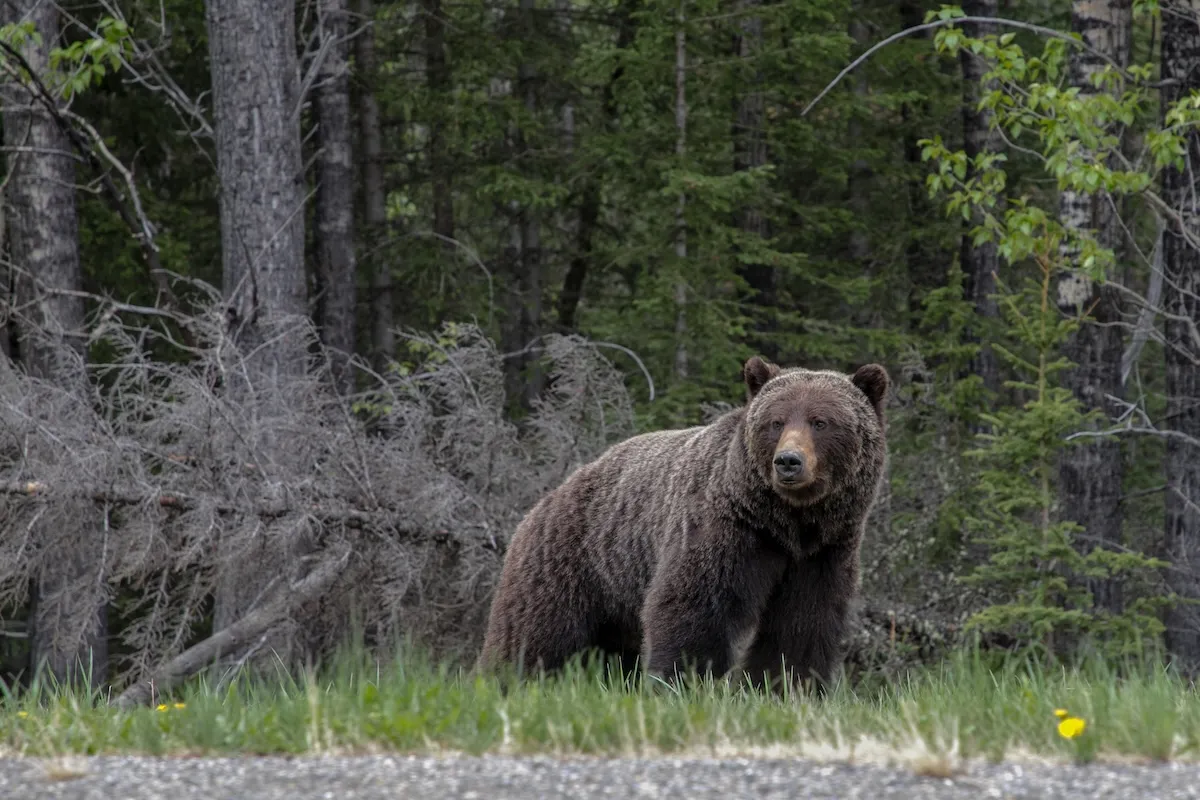
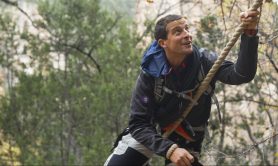

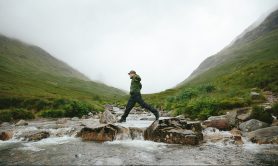
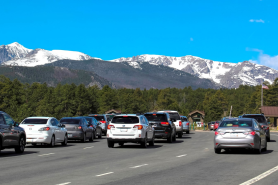
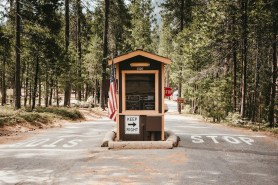

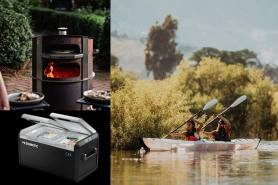

As the owner of a NEMO Hornet 2p 2tent I was shocked to see your reviewer classify the tent as freestanding. I’ll agree it is a great tent but some research is obviously in dire need. Perhaps they were confusing it with the dagger or dragonfly ? Some clarification is in order IMO considering it’s a 600$ ca purchase. Your choice of best overall is interesting only if MSR has remedied the issue of moisture pouring into the main tent when opening the rainfall.
Thanks for listening to my rant. 😉
You missed a significant contribution for the 2024 Market and I feel it would make it in the top 10. Look at the Dan Durston Xmid1 or 2. It fulfils all your criteria I would say..
Surprised that in a list of ultralight tents there’s no mention of many popular tents. ZPacks Duplex, Durston XMid, lots of Tarptent models, Gossamer Gear, Six Moon Designs. You at least got 3FUL, which is a good budget option but all the rest…they’re not really where ultralight is at these days. Perhaps 10 years ago but the industry has moved on.